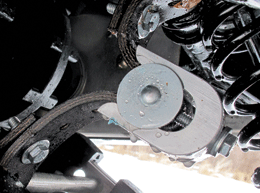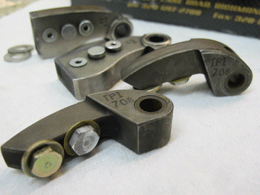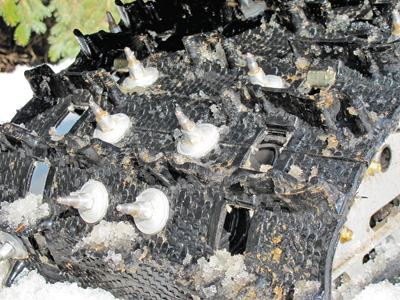 Arctic Cat’s latest tagline — The World’s Fastest Snowmobiles — has not come under attack. Its Z1 Turbo is king with a factory-claimed 177 hp. Its only competitors are sleds with serious engine mods or another Z1 Turbo. We had a 2009 Z1 Turbo in our fleet last year and decided to try some plug-and-play mods from D&D Power Sports for even more power.
Arctic Cat’s latest tagline — The World’s Fastest Snowmobiles — has not come under attack. Its Z1 Turbo is king with a factory-claimed 177 hp. Its only competitors are sleds with serious engine mods or another Z1 Turbo. We had a 2009 Z1 Turbo in our fleet last year and decided to try some plug-and-play mods from D&D Power Sports for even more power.
D&D Power Sports co-developed the HiJacker Z1 Turbo Boost Controller ($1,189) with Boondocker, maker of EFI fuel controllers of the same name. The added function of the HiJacker is specific for the Z1 Turbo: adjustable turbo boost pressure for increased performance. With quality fuel, good air and other conditions met, this tuning device can turn the Z1 Turbo into a 250-plus horsepower demon.
Moderately Difficult Installation
Installation took about two mildly difficult hours, requiring wire splicing and bodywork disassembly. We had an advantage with our HiJacker installation, partnering with master tuner and D&D driver Glenn Hall for our test. Hall knew how it went together and ensured our 2009 Z1 Turbo demo sled was in perfect operating order, spark plugs and all. With this type of boost and horsepower, the chance of misfire and detonation increases with an improper plug gap.
Time required for clutching changes is additional, but we had spare clutches assembled with the kit components to ease clutching changes while field testing.
The control box plugs into the main harness with only minor wiring modification. It works the same way as a standard EFI controller, with the additional function of controlling turbo boost pressure.
The HiJacker has a fun button, too. “Rapid Response” can be configured two ways: power on demand, or quicker access to the power queued. Arctic Cat’s factory setting with its turbo doesn’t reach full boost until 7200 rpm. The button bypasses this setting for an instant hit of full power, like nitrous. We mounted it on the left handlebar.
Settings From Stock To Mod
For a benchmark, we duplicated stock characteristics with the box installed. We set it to 180 hp with a factory boost setting before telling the engine to deliver more output.

Our test site was an unplowed fire road. The surface under the fresh dusting of snow was icy, but the snowpack offered decent traction. At 180 hp with no additional boost, Hall drove our Turbo to a quarter-mile pass in 13.84 seconds. A few button presses and Hall drove a run with the engine set to 210 hp and improved dramatically: 13.06 seconds.
The next step was adding more horsepower. The first attempt was 10 hp on the button for the Rapid Response thrill, but the result was track spin and over-rev. Bumping the HiJacker to 225 hp didn’t produce much of an improvement. With conditions ripe to run that kind of power, we made better use of it with a D&D clutching package ($479).
It included Dalton adjustable weights for the primary, a D&D helix and spring for the secondary and the company’s drive belt to handle the higher horsepower.
Our quickest run came with the D&D clutching and HiJacker set at 210 hp. We gained more than 11 mph and more than a second in the quarter-mile compared to stock,– with a best run of 12.19 seconds at 110.90 mph. The zero to 100 mph takeoff was nearly a 4-second improvement. Other higher-horsepower settings improved speeds at our measured distance, but we lost acceleration because of the icy surface.
The fastest speed we recorded on the test strip was 116.78 mph at the 225 hp setting. During our test runs the sled was out of radar range before we achieved a top-speed measurement.
Durable Horsepower
Hall has fed Z1 Turbo race engines upward of 350 hp, and he said he’s yet to see what the inside of the Z1 engine looks like. Though durability doesn’t appear to be an issue, you can bet that installation of a HiJacker voids the factory warranty.

The best feature of the little gray box is adjusting performance for the conditions or desired power. We rode the Z1 on hard pack trails at 225 hp when our studs had adequate grip. On wide straights the setup allowed thrilling, ski-lifting acceleration when we wanted it — at the touch of a button.
— Tim Erickson



